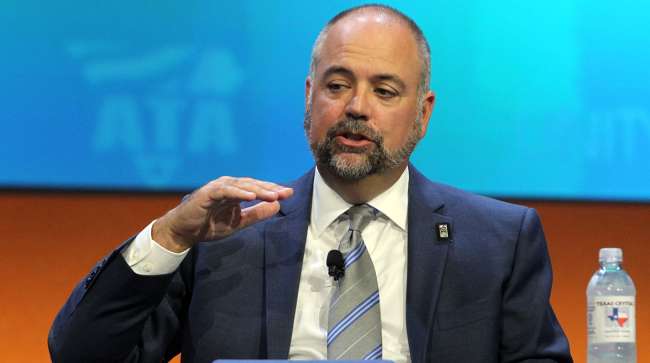Staff Reporter
Data Shows There Are More Truckers Than Ever, but Experts Say the Driver Shortage Is Still an Issue

[Stay on top of transportation news: Get TTNews in your inbox.]
While U.S. Census Bureau data shows the number of truckers at an all-time high, industry experts contend a driver shortage remains an issue.
The agency said earlier this month that the number of truckers surpassed 3.5 million in 2017.
A decade before, during the Great Recession, approximately 3.4 million people worked as truck drivers in 2007. The recession ended in 2009; by 2010, there were fewer than 3 million.
American Trucking Associations Chief Economist Bob Costello said although the number of truckers may be rising, the driver shortage still persists because there still are not enough truckers to keep up with demand.
It's not that the number of truck drivers has been in a constant decline. It's just that it's not growing enough to match up with what has been needed with demand.
ATA Chief Economist Bob Costello
ATA estimates that the industry is short at least 50,000 drivers.
“It’s not that the number of truck drivers has been in a constant decline,” Costello said. “It’s just that it’s not growing enough to match up with what has been needed with demand.”
Jeremy Reymer, founder and CEO of Indianapolis-based recruitment management company DriverReach, agreed, saying that the shortage is still a serious issue and that the Census Bureau’s findings are no reason to cheer, “Ding-dong, the witch is dead.”

Reymer
As for trucking companies, the Census Bureau reports the number of employer and self-employed trucking businesses reached 711,000 in 2016, an increase from 663,928 in 2007. (Data for 2017 is not yet available.)
Costello said the increase in truckers and trucking businesses may be the result of pay increases and widespread media coverage on the driver shortage.
“You put those two things together [and], I think it did help, but I’d be shocked if I ran the numbers and it wiped out the driver shortage,” Costello said.
Moreover, he said that the Census Bureau’s report reflects all truck-driving jobs, while the driver shortage pertains to a specific sector of the industry: over-the-road, for-hire truckload carriers.
The private fleets and less-than-truckload carriers generally don’t have the same recruitment and retention problems, he added.
The Census Bureau’s data, published June 6, showed other details about truckers: generally below-average education, but less likely to be unemployed than other workers, and they are less likely to have health insurance. Additionally, they tend to be older than the average worker, with a median age of 46 (compared with 41 for all other workers.)

Greenberg
Attorney Ben Greenberg, partner at Goldberg Segalla, said trucking has unique barriers to entry because federal law does not allow drivers between the ages of 18 and 20 to drive Class 8 commercial motor vehicles across state lines.
Reymer said federal regulations are a significant reason so few young people pursue trucking. He supports the Developing Responsible Individuals for a Vibrant Economy (DRIVE) Safe Act, a two-step program addressing the driver shortage in the trucking and logistics industry, and enhancing safety training and job opportunities for young truckers. Young drivers are required to complete at least 400 hours of on-duty time and 240 hours of driving time with an experienced driver in the cab with them.
“Naturally, there’s this barrier to entry,” Reymer said. “We’re not helping people establish a career right out of high school.”
The Census Bureau data indicates that the younger generation of truckers is also the most diverse. Truckers younger than 35 represent more women and Hispanic people than drivers who are over 55. Still, more than 90% of the 3.5 million truckers working today are men.
Reymer said the growing presence of women and minorities is encouraging for the future of trucking because, in addition to helping offset the driver shortage, these people are remodeling the industry’s image.
“[There is] a lot of opportunity to improve the image of the industry when you add women to the picture,” Reymer said. “I just think that’s so important.”




